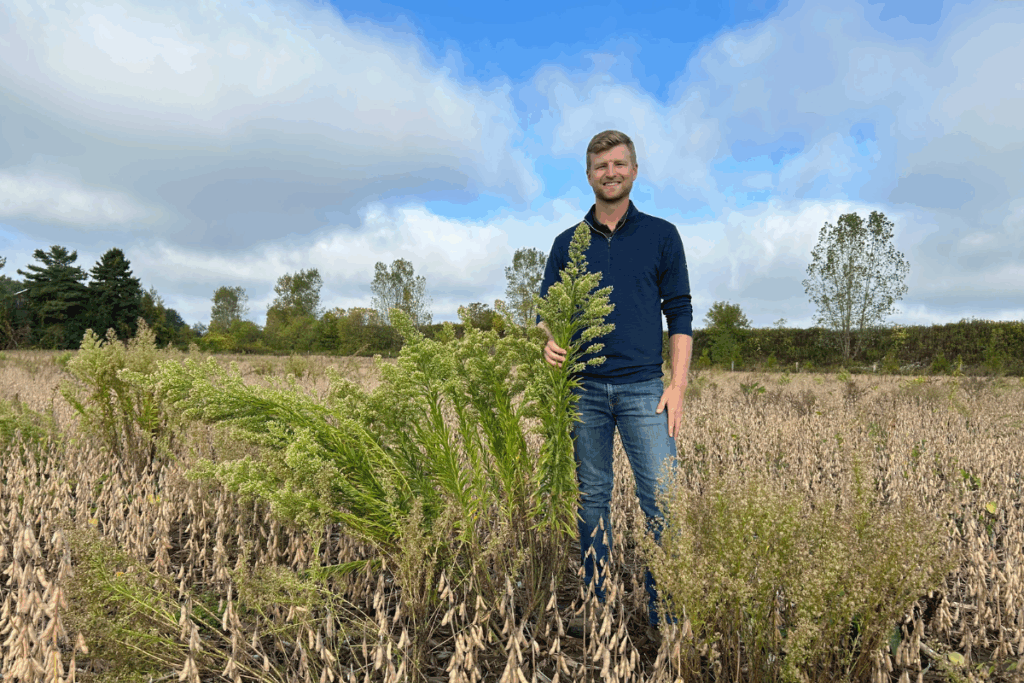Originally published on September 26, 2025 on RealAgriculture by RealAgriculture Livestock Team.
Fall is a busy time on the farm, but if growers can make time for weed control they will get a strong return on their investment.
On this episode of the RealAgriculture’s Wheat School, Bayer Crop Science agronomist Kurtis Pilkington looks at three key benefits of fall weed control. In the video, Pilkington and host Bernard Tobin check out a soybean field near Cambridge, Ont., where Canada fleabane has a strong foothold, dandelions are starting to flourish and some annuals are just finishing off.
The first benefit of tackling weeds in the fall, Pilkington says, is easing the spring management burden. If growers control weeds in a field like this in the fall there’s less fieldwork in the spring, and less competition for time and resources during planting season. He also notes that a fall application on ground going into wheat delivers strong weed control and avoids the spring crunch when herbicide spraying is often pushed back, beyond the optimum timing, when it is to be combined with a T1.5 or T2 fungicide.
Pilkington also stresses that a fall application will give improved weed control on challenging weeds. It offers a better opportunity to control perennial, biannual and winter annual broadleaf and grassy weeds. He notes that fall conditions typically increase the likelihood for ideal temperatures at spraying compared to early spring when cold or wet weather can delay herbicide application.
There’s also a yield benefit. Pilkington points out that like corn and soybeans, there is significant benefit in keeping fields clean early in wheat’s critical weed-free period to maximize yield. University of Guelph weed scientist Dr. Peter Sikkema pegged the yield impact at 7 bushels per acre in his trials. Pilkington adds that Sikkema’s research also highlighted the fact that fall weed control may result in a weedier looking field in the spring (compared to a spring herbicide application) but yield is higher.

